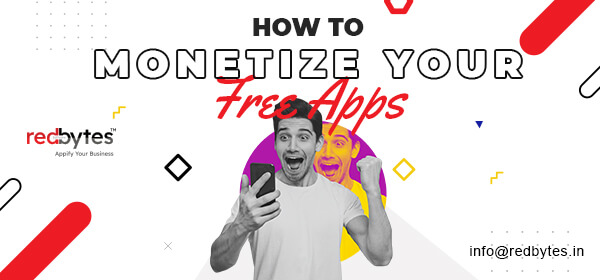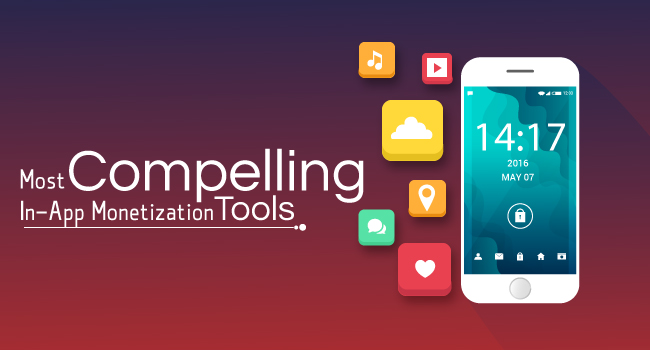Having a vision of a mobile app and then turning it into a mobile app is still a business half finished. You might have turned the idea into a mobile app, but you haven’t yet thought about adding monetization tools to your free app.
Let’s face it and be realistic, you haven’t really invested loads of money just to impress users with unique features. You also need to make profit by figuring out what ways can help you generate constant revenue.
Monetization thus is an essential part of conception, planning and development. Your newly launched app can also support monetization if you wish and plan to do so.
Since the post-launch monetization process might get a little complicated, you need skilled players to suggest what sorts of monetization work and how to implement them.
The following guide presents top methods to help you monetize your free app the right way.
Third-Party Advertising
In the service-oriented mobile apps, it is difficult to notice users who will fall for in-app purchases or subscription services added by developers. Most users expect free service – which is why there is a need to inject ad mechanism.
Users will be persuaded that they will enjoy high-quality content in exchange of seeing relevant ads on the screen now and then. But be careful about the how frequently ads are displayed and what types.

The best approach would be adding diversified ad content units of different sizes. This is viable for industries like ecommerce, travel, photo editing, gaming and entertainment.
You can easily couple these ads with supporting analytics to gain access to customer data such as behavior, location and preferences. This is a magnetic idea for users who seek free apps. Your app makes money by flashing relevant user-friendly ad products.
E-mails and Lead Generation
This might strike as simplistic, but having a newsletter in your app to send customers back to your website is a surefire way to monetize your efforts.
This may not be as easy as it sounds, and there are certain challenges to measure and track the transition. But in the end it works efficaciously.

Apps of this kind are meant to act as an essential part of the overall brand marketing, lead generation and customer acquisition strategy and focus on collecting as many emails and footprints as you can from customer interactions.
They are standalone solution but still seem to add value to the conversion funnel.
Engaging Content Dynamics
Having great content is something many app developers forget to consider. It is admissible that developing a mobile demands a lot of efforts and dedication, but you should be as much worried about whether or not it will create momentum for your business.

You are not done yet just after releasing the app. A good app populated with engaging content and features becomes great. Tale Calm for instance.
The meditation app is booming in the mind health domain, inspiring lots of people to subscribe to its meditation services and expert content. This app is the best example of how systematically you can encourage the users to opt for your premium services at a small fee.
Profitable Partnerships
A bunch of successful CEOs and market analysts also emphasize the idea of partnering with companies whose products or customers match with yours. The partnership works by integrating their offerings into your app as a third-party service in exchange for a fixed referral fee.
The company you have partnered with can eventually benefit your customers who will enjoy a smooth, integrated experience without switching between two apps. By successfully building a profitable partnership, this can turn out to be a massive revenue generator.
Freemium Levels
While content could take a little longer to interest the audience, what would save time is having different levels and versions of your app. Many entrepreneurs and app developers prefer to launch both free version and paid/premium version.
Either free versions will have customers exploring the app content with ads or it will give them a brief taste of what it is going to be. You can think of it as giving a trial period until users are all thorough with your app’s capabilities and potential.
By doing this, your customers will initially test-drive and integrate apps in their lives, eventually realizing they can’t resist using it. Thus, you can encourage them to upgrade to premium version to add more value.
Paid Downloads
Most iOS apps run on this monetization mechanism. Each time users download an app, they will pay an upfront fee as a monthly/yearly subscription or one-time charge.
Here, what you charge becomes the key to how much you can monetize and gain revenue. However, paid downloads should better be regulated by a poised, thoughtfully selected price structure.
Attach a price tag based on what your app promises to deliver and you are all set to earn from your app. Here the biggest pro is that there is no wait time, if your app is good you start generating profits the moment they download the app.
Expect more loyalty since they will interact with an app with clutter-free, ad-free UI.
Multiple Pricing and Subscription Options

Even your monetization methods don’t need to be workaday and boring. Treat your customers with multiple subscription and in-app purchases options, each including different benefits altogether.
Include at least one of many that is highly viable and more appealing to users. The combo subscription offer here seems to work, the one that seemingly adds value to customers.
You may divide them based on web and mobile experience with mobile app version bringing obviously more merits in terms of discount and savings. You can customize your own pricing strategy for this monetization to work.
Blend of Multiple Approaches
In-app purchases and advertising may appear to be the best options of monetizing your free app. However, a holistic approach would be more effective and attractive for today’s evolved app users.
If you want to appeal to the enormous audience out there, make sure you build several solutions that entice diverse set of users to make purchase.
Read also : Most Downloaded Apps in 2018
Some appreciate subscriptions packages while others are smitten by fancy in-app purchases. Therefore, instead of focusing on merely in-app purchases options or advertising won’t do much good.
Create a perfect blend of multiple monetization approaches to match the taste of various users including a few ad units, purchasable merchandizes or upgrades, priced features and more. This will set in place something-for-everyone attitude.
Data-Driven user Engagement
Mobile app owners and marketers are often so occupied with user acquisition they neglect how important it is to retain and reengage existing user base.

The best way to keep up with monetization drive which comes from that small percentage of loyal users. For instance, only a small percentage of total mobile gamers are generous, enthusiastic spenders who love to buy expensive features for more thrilling experience.
These users give you a major portion of total app’s revenue. Make sure you monitor the minute behavior of the loyal users and use the data to engage and retain them better. Leverage right messages for such data-driven monetization.
License Your App Code
Have you thought about patenting the app code after observing some success after the launch? It is great to think about licensing your code after building an awesome free model of your app and seeing satisfying traction.
Create a licensed code ownership system for other developers who will pay some fixed charge if they want to imitate the app design.
Read also : How To Create an App and Make Money
This will not disrupt the experience of your existing users because they won’t see any obtrusive ads or clutter features. You can think of Uber for this example.
Make your app powerful and usable enough to attract massive number of users and entice other developers who wish to save heap of time and efforts in writing code.
Conclusion
Building an app seems like a relatively easier job compared to what comes after that. The number of mobile apps in online stores is high and competition is intense.
You must stand out if you want to earn from your newly launched app. Your potential users naturally gravitate to free app services.
However, with mobile app market opening countless opportunities, you will find many diverse ways to engage users and monetize your app content. Depicted above are a few effective ways to introduce monetization in your free apps.




